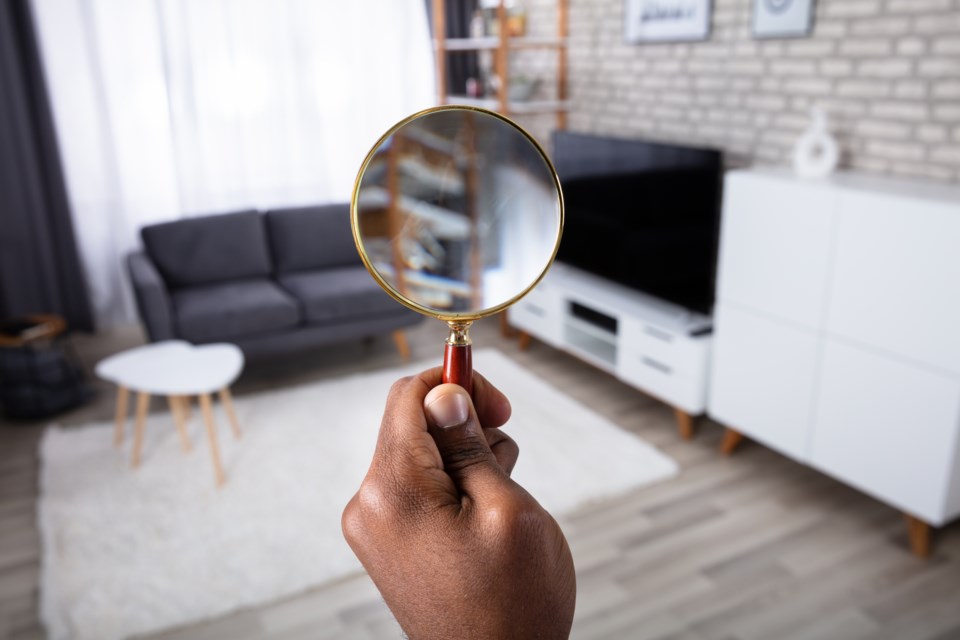Buyers often get distracted when looking at homes. Their attention is drawn toward the staging and furniture, the fresh coat of paint and the stylish décor.
It may be human nature, but you’re doing yourself a disservice by not focusing on the truly important stuff. Instead, buyers should be concentrating on the bones of the house and be on the lookout for any deficiencies, because many can be quite costly to repair.
“Buyers are almost always distracted by the ‘bling’ and that is why staging is done by some REALTORS®. I have seen houses in terrible disrepair staged to look like the cutest house. You have to remember that the house does not come with all of that furniture and sometimes even the light fixtures are excluded,” says REALTOR® Christine Lovatt.
Instead, buyers should focus on the following:
- Windows – Are they newer? Do they have any condensation or fog? Are they made of wood, which requires upkeep? Windows are very costly to replace.
- Doors – Look for any gaps that let in the cold, for any doors that are ill-fitting or for any warped steel, which can happen when a screen door was installed.
- Furnace and Air Conditioner – Try to determine the age of both of these, as they cost over $5,000 to replace.
- Roof – Look for any curling shingles. A warped roof may indicate that there is moisture under the shingles or that the roof has poor support. A new roof can cost over $7,000, depending on the size and the differing roof lines of the home.
- Electrical Panel – Check to see if this is outdated or fused under 100 amp and whether the wire is copper or aluminum. Your insurance will most likely demand you upgrade the panel to 100 or more; you may need to fix the aluminum to be safe—and that will run you quite a few thousand dollars.
- Downspouts and Eavestroughs – These need to be properly placed and in good working order, to keep water away from the house.
- Foundations – Be on the alert for any large cracks, which can let water into the basement. Another sign to look for is leaks around the basement walls, which can be signs of the weeping tile not functioning well. This is a very costly repair that can go well over $15,000.
- Sump Pump – Make sure that there is a working sump pump. Some areas are wetter than others, such as a subdivision built on a former marsh, where you’ll need the sump pump to keep all of the water out of the basement.
Also be on the lookout for any cracks in the drywall. Any damp spots or stains may indicate a roof leak. You should also be on high alert for an old or poorly maintained paved or stone driveway; these can cost in the thousands to replace or repair.
“The costliest items you can see are the ones many buyers pay the least attention to,” says the agent.
Lovatt would rather buyers look for homes that have good bones. But what exactly is meant by this common phrase? “Good bones in a house mean a strong, well-built foundation. The floor joists are the proper size and spread the proper width; they don’t squeak and bend as you walk across them. A steel beam is great to see in an unfinished basement. The house just feels strong!” she says. “You can always make the inside pretty if you have a good start with the basics.”
While agents are not allowed to hide any deficits, some sellers do try to conceal certain imperfections. Be on the lookout for boxes or stuff placed along the foundation walls in the basement, in hopes of hiding cracks or leaks. Some use pretty drapery to draw your attention away from old windows, freshly painted ceilings to hide stains or they leave lots of items out on a kitchen counter in hopes of hiding marks or burns on the countertop.
Others use shower curtains to obscure badly caulked tubs with rusty drains or tiny furniture to disguise the fact that a room is really small. A picture can hide a large hole in the wall. Big storage pieces can make it look like there is a lot of storage in the home when in fact those pieces will be moved with the seller.
“When I purchased by first house in High Park, I missed that the electrical outlets were only two holes, no ground. The bed that looked like a king was actually two twins—because you couldn’t get a box spring up and around the stairs to get it into the bedroom. The furnace was so old it smoked and burned the first time we put on the heat!” says Lovatt. “So when I take out first-time buyers, I do all I can to help protect them from not seeing all the flaws!”
Of course, a home inspection will help you recognize all of these issues and more, but in today’s market many people are buying without putting in that clause.
Says Lovatt, “Take a home inspector with you for a quick look at your showing. It also gives you an idea about what the future maintenance of the property will require and helps you gauge what you should be putting away to save for those possible repairs.”
She recommends using a REALTOR® who is knowledgeable and cares about getting you the best possible home in the best possible shape.
To book a free consultation, visit List With Lovatt, call 705-717-8726 or book direct.
